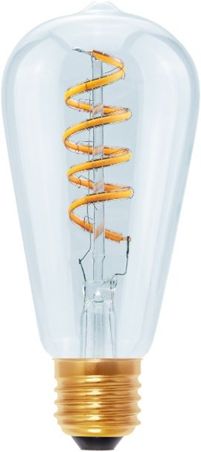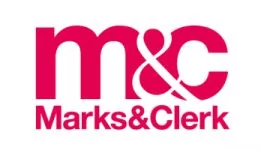- within Immigration topic(s)
The European General Court issued a decision on 12 March 2025, clarifying that for a registered design to benefit from the grace period it does not need to be identical to an earlier disclosed design but instead should invoke the same overall impression.
Before delving into the decision, it is first worth noting the differences between patents and registered designs, and what the grace period is.
Patents
Patents can broadly be considered to protect how something works, and in order to obtain a patent, what is claimed must be novel and inventive. In the UK and Europe, the test for novelty is strict. A patentee's own public disclosure of the invention is prejudicial to the assessment of novelty if the disclosure is made before the patent is applied for.
Registered Designs
Registered Designs protect how something looks. For a registered design to be valid, the design must be new and have individual character. In contrast to patents, in the UK and the EU the test for if a design is "new" is somewhat more lenient. A designer's own public disclosure is not prejudicial to the validity of the design, provided that the registered design is applied for within 12 months of said disclosure. This 12-month period is known as the grace period.
The Law relating to the grace period in the EU
Article 7(2) of the Community Design Regulation (CDR) states:
A disclosure shall not be taken into consideration for
the purpose of applying [the test for novelty and individual
character] if a design for which protection is claimed under a
registered Community design has been made available to the
public:
(a) by the designer, his successor in title, or a third
person as a result of information provided or action taken by the
designer or his successor in title; and
(b) during the 12-month period preceding the date of
filing of the application or, if a priority is claimed, the date of
priority.
In summary, Article 7(2) CDR allows for a designer (or subsequent owner of a design) to apply for protection up to a year after they first disclose a design, without their own disclosure being detrimental to the design registration.
How is the grace period used by Designers, and does the registered design need to be identical to what was disclosed?
There are many reasons why a designer may wish to make use of the grace period. For example, a designer may simply not have considered applying for registered designs and only after the launch of their design wishes to seek protection for it. As another example and what is more commonly the case, a designer may wish to "test" their design on the market before seeking registered design protection.
Where a product is tested on the market before registered design protection is applied for, the market feedback may result in the designer making changes to their design and result in the designer wishing to obtain registered design protection for the revised design. However, there has been some uncertainty as to whether the test design which was placed on the market could be prejudicial to the validity of a registered design directed towards the revised product (by destroying the novelty of that later design), or whether the revised product would benefit from the 12-month grace period. This uncertainty has now been answered in the recent European General Court decision of Lidl Vertriebs GmbH & Co. KG v European Union Intellectual Property Office (EUIPO) T-66/24.
Background of T-66/24
This case arose because Lidl Vertriebs GmbH & Co. KG "Lidl" filed an application on 25 May 2021 to invalidate a registered Community design owned by Liquidleds Lighting Corp "Liquidleds" (filed on 12 January 2017).

Registered design 3 619 881-0003 filed by Liquidleds
Lidl argued that the above registered design should not be valid because of disclosures made by Liquidleds in the 12 months preceding the filing of the registered design. Lidl argued that modifications made to the design during the grace period would affect the protection afforded by Article 7(2) CDR.
The contested validity of Liquidleds design has led to the European General Court considering the aspects of burden of proof and assessment of evidence, but most significantly considering the interpretation of what is afforded by the grace period under Article 7(2) CDR.
The European General Court decision T-66/24
The European General Court considered Article 7(2) CDR and provided detailed commentary that this provision does not use the word "identical" and that if the EU legislature had intended to limit the application of the grace period to the disclosure of an "identical" design or the "same" design it would have said so expressly as it has done in other Articles of the CDR e.g. Article 41(1) which refers to the "same design".
The Court further noted that the interpretation put forward by the applicant (Lidl) would mean that, by registering a design which is not identical to the design tested in the marketplace, the designer or his or her successor in title would run the risk of having his or her own disclosure of that earlier design, during the grace period, relied upon against him or her in invalidity proceedings. The Court concluded that if this interpretation were followed it would be contrary to the aim of Article 7(2) CDR, and, more generally, of the protection system of Community designs, intended to enable the designer to test a design in the marketplace and to encourage innovation and development of products.
The Court's interpretation is consistent with the forthcoming "EU Design" Regulation 2024/2822, which specifically replaces the introductory words of Article 7(2) CDR with "A disclosure shall not be taken into consideration for the purpose of applying Articles 5 and 6 if the disclosed design, which is identical with or does not differ in its overall impression from the design for which protection is claimed under a registered EU design, has been made available to the public:". This consistency helps establish a unified legal framework that remains applicable under the new Regulation.
Additionally, this ruling offers valuable practical guidance on evaluating the connection between disclosed and registered designs. Instead of demanding exact matches, protection extends to designs that convey the same overall impression as the originally disclosed version, recognising the practical nature of iterative product development.
Conclusion
The Court's analysis and conclusions show a clear understanding of the complexities involved in modern product development. By rejecting the requirements for absolute novelty but upholding the "same overall impression" standard, the Court appears to have balanced the need for protection with the need for flexibility.
This approach supports innovation while safeguarding legitimate business interests. Design owners applying for registered Community designs can now use the grace period with greater confidence as part of their product development plans, knowing that reasonable changes won't jeopardize their rights in the EU, providing they maintain records and meet the overall impression criteria.
Although this decision is welcomed, it is still important to be aware that not all jurisdictions have a grace period provision for designs. Of note, China does not have a grace period provision for registered designs and requires absolute novelty. Further, as indicated above, there is generally no equivalent grace period provision for patents. Therefore, if wishing to rely on the grace period for designs in the EU and the UK, careful consideration should still be taken if wishing to seek registered design protection elsewhere. Consideration should also be given as to whether a disclosure of a design, even if in the grace period, could be prejudicial to other forms of intellectual property protection such as patents.
The content of this article is intended to provide a general guide to the subject matter. Specialist advice should be sought about your specific circumstances.



